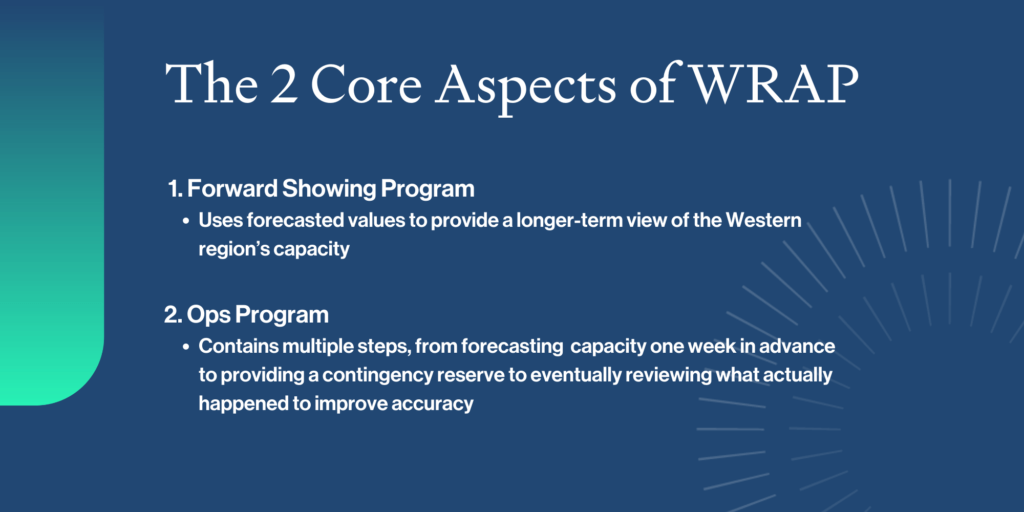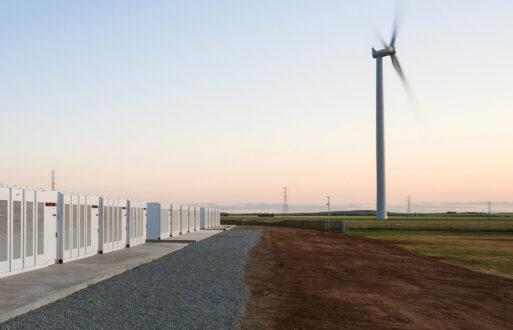The Western market is seeing a seismic shift thanks to ongoing efforts to decarbonize the Western grid. More and more state legislatures and regional public utility commissions require utilities to transform their energy portfolios by including more renewable resources.
For example, Arizona aims to have 100% carbon-free power by 2050. Oregon increased its renewable portfolio standards to 50% by 2040, while Washington state’s standard requires 100% of its electricity to be provided by zero-carbon sources by 2045.
To facilitate this transition to a more sustainable grid, utilities must address that over the next decade, they’ll need to bring significantly more variable generators online than thermal generation. The challenge with those variable generators is that they are intermittent by nature, leading to significant capacity issues that need to be managed.
To address these capacity concerns, the Western Power Pool (WPP) is rolling out WRAP, or the Western Resource Adequacy Program.
What is WRAP?
As the name implies, WRAP is a resource adequacy program that aims to ensure the grid’s reliability in the western U.S. The program, which will be operated by the Southwest Power Pool (SPP) and governed by Western Power Pool (WPP), isn’t so much a market as it is a matchmaker that uses transmission availability and market hubs to evaluate and match deficient entities with voluntary showings at a tariff price.
The program will optimize resource adequacy and provide access to shared resources, which is expected to improve reliability dramatically.
Members submit portfolio-level capacity data to WRAP, which algorithmically evaluates those resources based on loss of load expectation (LOLE) or effective load-carrying capacity. WRAP also measures each participant’s ability to deliver forward and operational showing to the point of need.
Then, based on the big picture of what’s happening in the region, the platform lets the member know if their capacity is sufficient or deficient. If it’s deficient, the platform “matches” the member with another member with excess capacity.
WRAP is not a marketplace; it doesn’t issue commitment instructions or dispatches. A marketplace would tell you how to run your resources hourly or in five-minute increments. Instead, WRAP is more of a high-level regional capacity check designed to prevent a loss of load event based on a 1:10 approximation at the P50 statistical probability level.
WRAP members have a contractual obligation to ensure they have sufficient capacity and transmission to meet their resource adequacy requirements. The program’s value is the co-optimization of resources to reduce the impact of a LOLE event across the program footprint.

The 2 core aspects of WRAP
There are two programs within the WRAP platform: the Forward Showing Program and the Ops Program.
The Forward Showing Program
The Forward Showing Program provides a seasonal longer-term view of the Western region’s capacity. Here’s how it will work.
Members will file a series of reports that essentially say, based on what I know today, this is what I think my capacity will be in six or seven months. These calculations will be based on historic norms around peak demand, the qualified capacity of the utility’s portfolio of assets, and planned maintenance schedules.
Additionally, the utility will submit data about its transmission capacity, including its long-term firm transmission reservations. With the Forward Showing submission, the utility ultimately demonstrates its ability to reliably deliver capacity to the hubs or systems in the program’s operational footprint.
Of note, a key aspect of WRAP is that it has nodes that can share resource adequacy should the correct transmission be made available. Additionally, the transmission owner/operator is compensated for delivery of that capacity under WRAP, which wouldn’t typically happen with an energy market-centric mechanism.
The Ops Program
While there’s a science to planning and understanding capacity six months in advance, more accurate data can be calculated closer to the day of. That’s where WRAP’s Ops Program comes in — utilities will update their Forward Showing data within the Ops Program window.
Multi-day file
The first filing the utility will make under the Ops Program is a week-ahead look at capacity. Things break, and unexpected outages happen; the week-ahead, or multi-day file reports those additional outages to WRAP.
The multi-day file also updates other aspects forecasted in the forward showing, including run-of-river, solar, and wind capacity. These generation sources are notoriously difficult to predict six months in advance since current weather conditions largely dictate production.
So, a week out, the utility will use individual resource-level data to update its portfolio-based view of the world — which leads to improved reliability for all WRAP members because it refines the educated guess made six months ago with data that is a far more accurate view of load and capacity.
Contingency reserve
The contingency reserve file is also updated under the Ops Program. Typically calculated as 3% of load and 3% of generation, this is the utility’s planning margin or buffer. For example, if your load and generation are both 1,000 megawatts (MW), you’d need 60 MW of contingency reserve.
Of note, contingency reserve responsibility can be assigned to other entities through tagging elements. This calculation is also included in the contingency reserve file.
WRAP evaluates member contingency reserve data to ensure those obligations are correctly credited to the respective requirement source. This is a vital element to both resource adequacy and reserve-sharing programs.
Operating day file
The utility will next submit the operating day file to WRAP. This information updates the multi-day or week-ahead load forecast, contingency reserve, and generation forecast on a rolling 24-hour basis.
It’s important to note that all the data we’re talking about here is often proprietary and not something utilities typically share. What WRAP does is serve as an independent data clearinghouse that allows the region to work together to ensure the reliability of the Western grid while maintaining the confidentiality of every utility’s data. Without a regional look at these specific data points, the reliability of the West could be at risk.
Actual file
The last file submitted as a part of WRAP is the actual file. Utilities will give one final update showing what actually happened in terms of outages and generation, as well as reservation and allocation from the contingency reserve. The actual file serves as a sanity check, allowing utilities to refine future forecasts based on the accuracy of their previous forecasts.
WRAP timeline
The first few months of 2023 have focused on WRAP registration and reviewing input specifications, business practices, uncertainty proposals, and safety margins. As of May 1, connectivity setup commenced, with Ops trials starting June 1.
The Ops trial period will allow participants to become more familiar with the program and the associated day-to-day activities required. One of the first milestones during the trial will be connectivity testing, slated to begin June 5, 2023. Structured and unstructured testing is scheduled to run from July 3 to Aug. 14, 2023.
The non-binding ops program will become fully operational on Nov. 1, 2023.
Managing the data
Clearly, participation in WRAP will require utilities to manage a significant amount of data, and manually crunching the numbers in a spreadsheet is tedious and inefficient. That’s where PCI Energy Solutions can help. Our software gives you a holistic look at your entire energy portfolio. Our platform is a central data hub that can simplify your participation in WRAP.
All the data points you’ll need for your Ops Program submissions are already tracked and stored in our platform — your forecasts, outages, contingency allocations, and metered actuals after the fact.
As noted above, the second half of 2023 is slated to be a testing cycle for the WRAP program. If you need help preparing for WRAP participation, PCI’s powerful software solutions stand ready to help.
Request access to our webinar, “Understanding New Market Initiatives in the West: WRAP, DAME, & EDAM,” to learn more.







